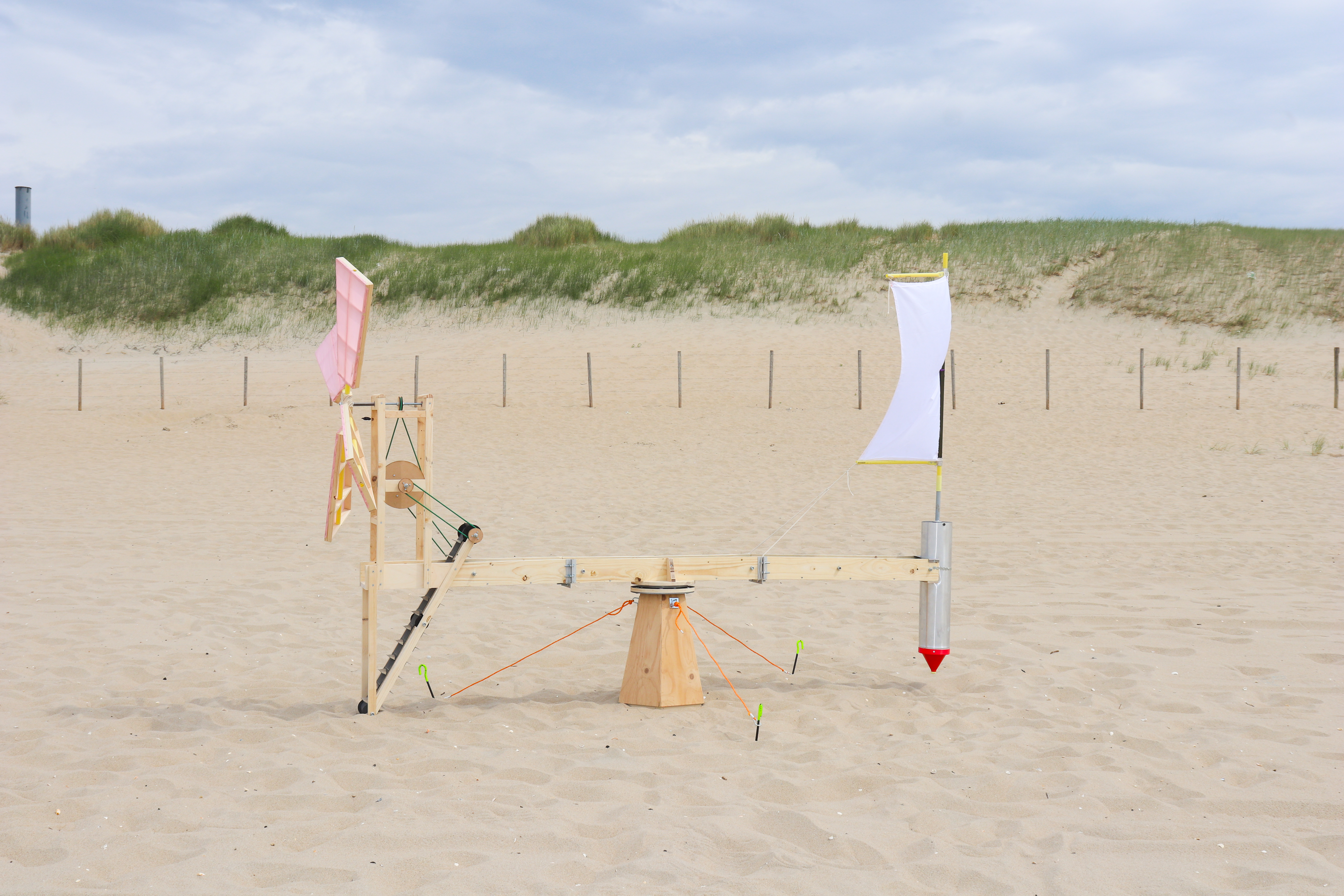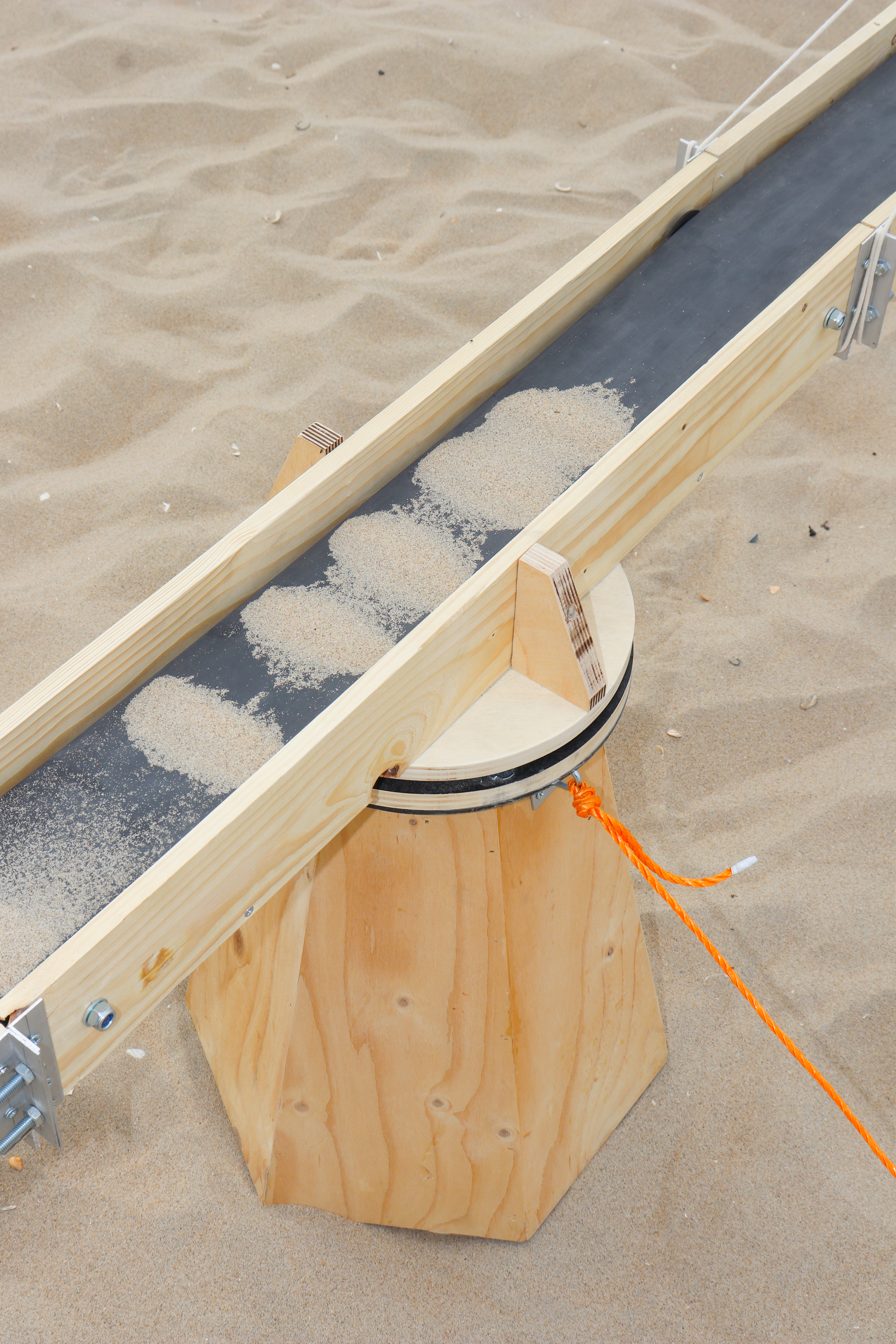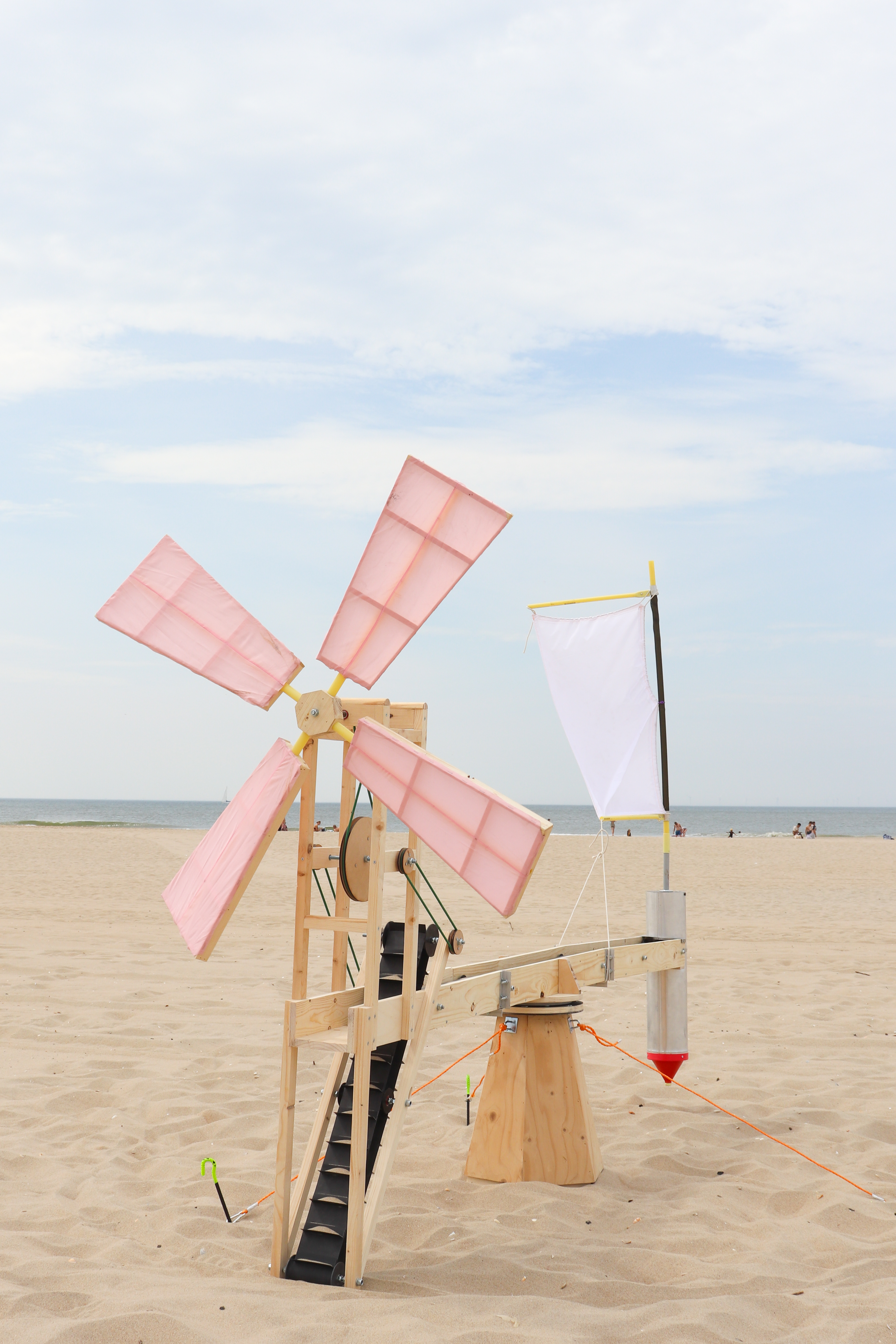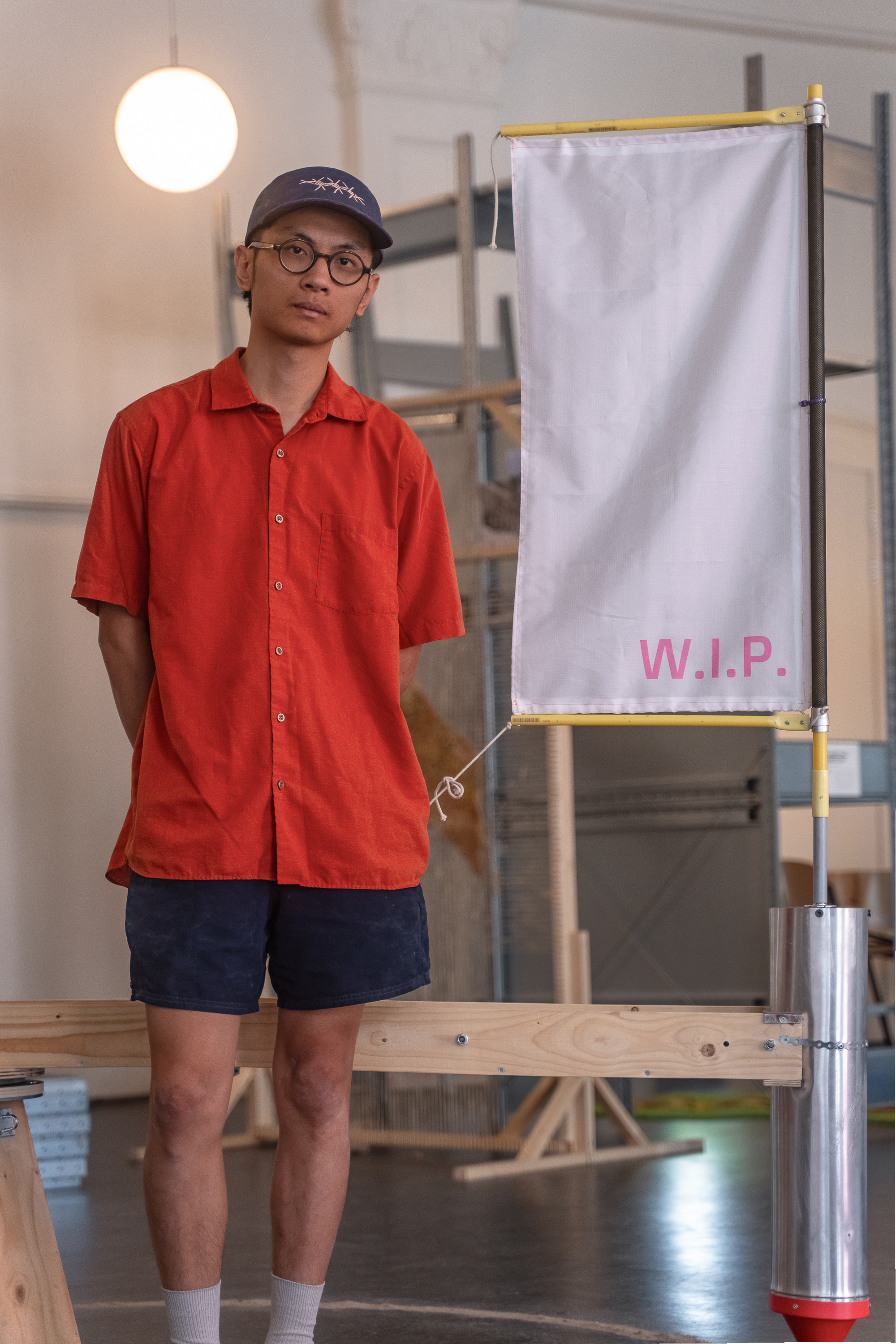W.I.P.: Windmill In Play
–
Taiyi Yu
–
Taiyi Yu
W.I.P.: Windmill In Play is an installation featuring a deconstructed windmill and a video of how it was put together. The object utilises winds to help collect and transport sand from one point to another point, moving in a loop. This creates a movement that gradually shapes the ground below, leaving behind a visual imprint of the wind’s power. Through the work I consider how winds have been harvested through windmills, and to reflect on how we perceive winds. For the construction of the windmill, I used a diverse range of found materials, engaging in continuous, intuitive improvisation throughout the prototyping process. In doing so, I created this conversational object that responds to the mechanistic worldview of utilising winds, encouraging viewers to explore their own relationship with this natural force and the wider world around them.
![]()
Upon arriving in the Netherlands from Taiwan, I was struck by both the strong winds and the iconic windmills. ‘How have winds been industrialised?’ was the starting point for my research, in which I explored how and why winds have been appropriated both historically and contemporarily. The framework of modernity/coloniality helped me to understand how the invention and practice of ‘wind objects’ can be related to the constrained perceptions of the natural world under the paradigm of modernity.
![]()
![]()
Through analysing the wind rose, windmill, and storm warning pole from perspectives of navigation, power, and measurement – and simultaneously making prototypes – I explored the logics behind the relationship between humans and the ubiquitous winds in the Netherlands. The windmill, as a concrete example but also as a metaphor for modern industrialisation, is implicated in the dichotomy between humans and nature. It exemplifies the rationality of seeing the natural world as a resource, a power that reconstitutes experience through its mechanical structure.
![]()
![]()
Such a mechanistic worldview has undeniably played a significant role in shaping the relationships between humans and the natural world, influencing our daily lives and encouraging resource exploitation, captured by and expressed through functional objects as well as infrastructures. But can we move away from objectifying winds to reimagine other ways that reframe our engagement with the natural world? W.I.P. aims to bring this reflection into the practice of crafting a windmill. In playing with the composition and function of this machine, I also question how designers who shape the material world in relation to landscape can establish a different relationship with the elements, such as winds, by incorporating personal narratives and distinct ways of sensing.
W.I.P.: Windmill in Play in Action on the Beach
Studying at MID has provided me with a comprehensive understanding of the social, cultural, and historical aspects of design. By developing W.I.P., I see myself as a designer who creates objects for reflection and storytelling. I am particularly interested in adopting an improvisational and hands-on approach to exploring relationships between humans and the natural world, intuitively unravelling hidden narratives and sparking reflection. I am driven to continue crafting tangible artefacts that serve as catalysts for dialogue, connecting different perspectives and unfolding engaging stories through the playfulness and flexibility of design.
![]()

Upon arriving in the Netherlands from Taiwan, I was struck by both the strong winds and the iconic windmills. ‘How have winds been industrialised?’ was the starting point for my research, in which I explored how and why winds have been appropriated both historically and contemporarily. The framework of modernity/coloniality helped me to understand how the invention and practice of ‘wind objects’ can be related to the constrained perceptions of the natural world under the paradigm of modernity.
Through analysing the wind rose, windmill, and storm warning pole from perspectives of navigation, power, and measurement – and simultaneously making prototypes – I explored the logics behind the relationship between humans and the ubiquitous winds in the Netherlands. The windmill, as a concrete example but also as a metaphor for modern industrialisation, is implicated in the dichotomy between humans and nature. It exemplifies the rationality of seeing the natural world as a resource, a power that reconstitutes experience through its mechanical structure.


Such a mechanistic worldview has undeniably played a significant role in shaping the relationships between humans and the natural world, influencing our daily lives and encouraging resource exploitation, captured by and expressed through functional objects as well as infrastructures. But can we move away from objectifying winds to reimagine other ways that reframe our engagement with the natural world? W.I.P. aims to bring this reflection into the practice of crafting a windmill. In playing with the composition and function of this machine, I also question how designers who shape the material world in relation to landscape can establish a different relationship with the elements, such as winds, by incorporating personal narratives and distinct ways of sensing.
Studying at MID has provided me with a comprehensive understanding of the social, cultural, and historical aspects of design. By developing W.I.P., I see myself as a designer who creates objects for reflection and storytelling. I am particularly interested in adopting an improvisational and hands-on approach to exploring relationships between humans and the natural world, intuitively unravelling hidden narratives and sparking reflection. I am driven to continue crafting tangible artefacts that serve as catalysts for dialogue, connecting different perspectives and unfolding engaging stories through the playfulness and flexibility of design.
